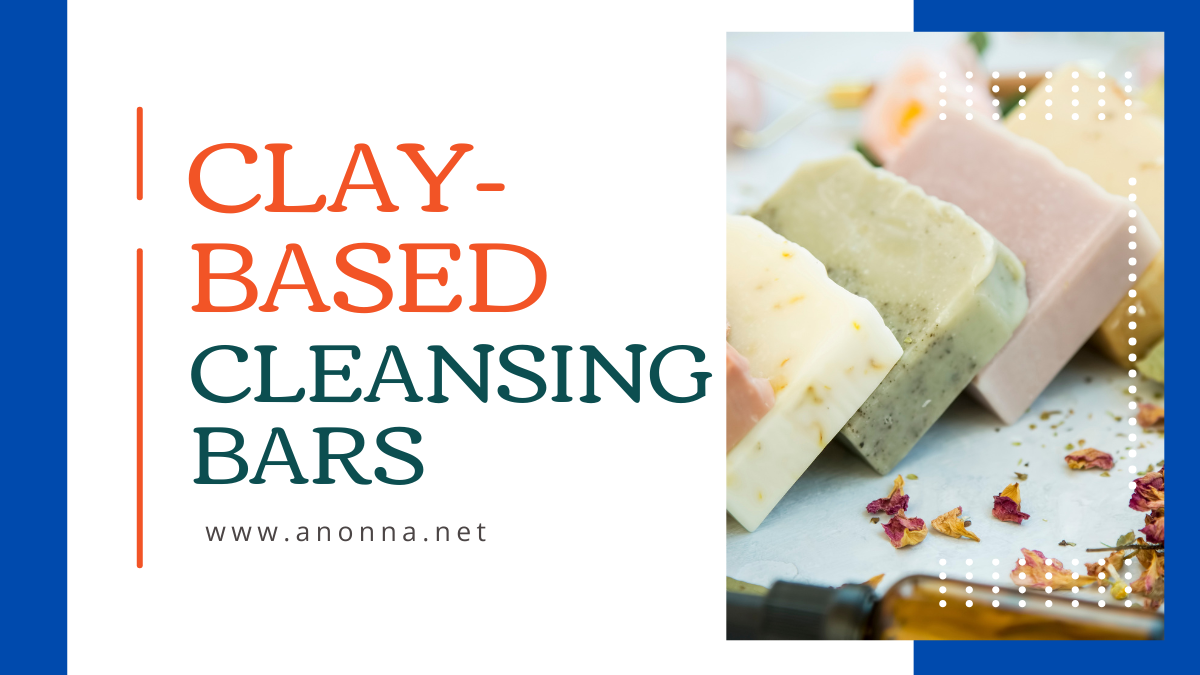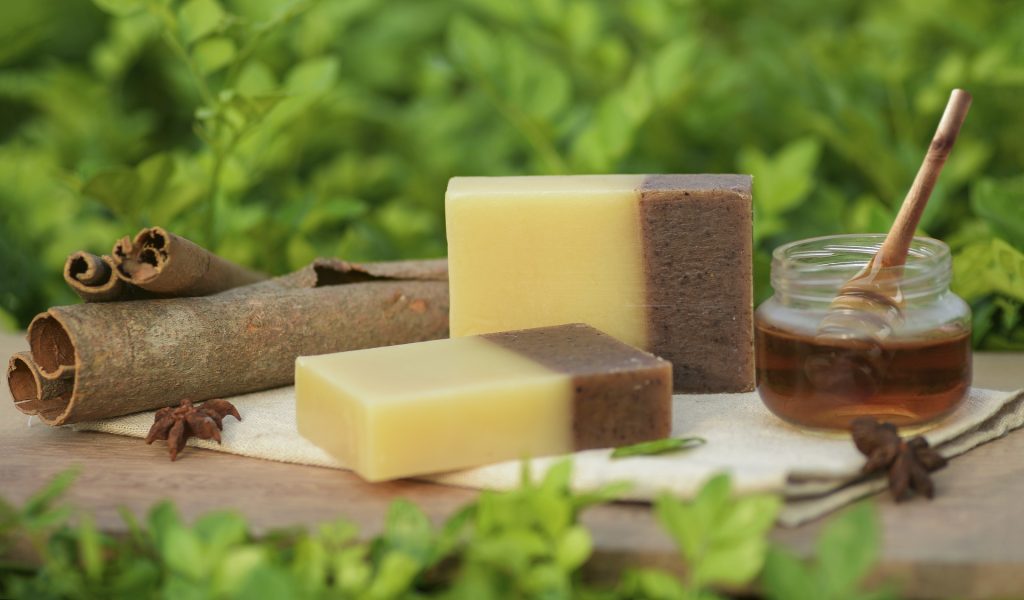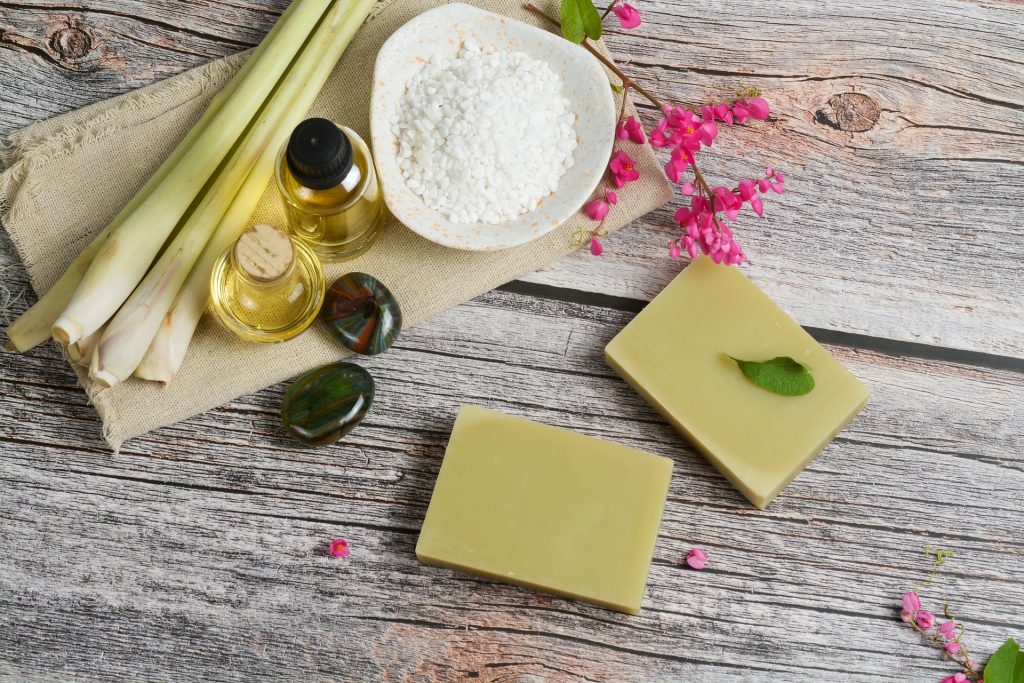
Top Clay-Based Cleansing Bars for Radiant Skin: Benefits, Tips, and Best Picks 2025
In the realm of skincare, clay-based cleansing bars have emerged as a popular choice for those seeking natural and effective cleansing solutions. These bars harness the power of various types of clay to purify and rejuvenate the skin, offering a holistic approach to daily cleansing routines. Unlike traditional soaps that can sometimes strip the skin of its natural oils, clay-based cleansing bars provide a balanced cleanse, making them suitable for a wide range of skin types.

What Are Clay-Based Cleansing Bars?
Clay-based cleansing bars are solid soaps formulated with different types of natural clays as their primary cleansing agents. These clays, such as bentonite, kaolin, and French green clay, are renowned for their ability to absorb excess oils, draw out impurities, and provide essential minerals to the skin. Typically, these bars also contain other nourishing ingredients like essential oils, shea butter, and botanical extracts to enhance their moisturizing and soothing properties. The combination of clays and natural additives makes these cleansing bars both effective and gentle, catering to various skincare needs.
History and Evolution of Clay Cleansers
The use of clay in skincare dates back thousands of years, with ancient civilizations like the Egyptians and Greeks utilizing clay masks and poultices to maintain healthy and radiant skin. These early formulations leveraged the natural detoxifying and healing properties of clay to cleanse and protect the skin from environmental aggressors. Over time, the application methods evolved from masks to more convenient forms such as creams and bars. In recent years, there has been a resurgence of interest in traditional skincare practices, leading to the development of modern clay-based cleansing bars that combine ancient wisdom with contemporary skincare science. This evolution has made clay cleansers more accessible and tailored to the diverse needs of today’s consumers.
Benefits of Using Clay-Based Cleansing Bars
Clay-based cleansing bars offer a myriad of benefits that make them a standout choice in the skincare market. Their unique formulation not only cleanses the skin effectively but also provides additional advantages that contribute to overall skin health and appearance.
Deep Pore Cleansing and Detoxification
One of the primary benefits of clay-based cleansing bars is their ability to perform deep pore cleansing. The fine particles of clay work by attracting and absorbing excess sebum, dirt, and impurities from the skin’s surface and pores. This detoxifying action helps to unclog pores, reduce the occurrence of breakouts, and prevent the formation of blackheads and whiteheads. Regular use of these cleansing bars can lead to clearer, smoother skin by maintaining optimal pore health and minimizing the buildup of environmental pollutants.
Natural Ingredients for Sensitive Skin
Clay-based cleansing bars are often formulated with natural and gentle ingredients, making them ideal for individuals with sensitive skin. Unlike harsh soaps that can cause irritation and dryness, these bars contain soothing agents such as aloe vera, chamomile, and essential oils that calm and nourish the skin. The natural clays used are non-comedogenic and hypoallergenic, ensuring that they cleanse without causing adverse reactions. This makes clay-based cleansing bars suitable for various skin types, including those prone to redness, inflammation, and other sensitivities.
Eco-Friendly and Sustainable Skincare Choice
In addition to their skincare benefits, clay-based cleansing bars are an eco-friendly and sustainable choice. These bars typically come in minimal, recyclable packaging, reducing plastic waste compared to liquid cleansers in plastic bottles. Moreover, the natural ingredients used are often sourced responsibly, ensuring that their production has a lower environmental impact. By choosing clay-based cleansing bars, consumers can support sustainable skincare practices and contribute to the preservation of the environment while enjoying effective cleansing benefits.
By understanding the foundational aspects and benefits of clay-based cleansing bars, readers can make informed decisions about incorporating these natural products into their skincare routines. The subsequent sections will delve deeper into the specific advantages, key ingredients, usage tips, and top product recommendations for 2025.
Key Ingredients in Clay-Based Cleansing Bars
The efficacy of clay-based cleansing bars largely depends on the quality and combination of their ingredients. Understanding these components can help consumers choose products that best suit their skin type and skincare needs. This section explores the primary clays used in these bars and the additional natural ingredients that enhance their cleansing and nourishing properties.
Types of Clay Used and Their Properties
Different types of clay offer varied benefits, making each suitable for specific skin concerns. Here are some of the most commonly used clays in cleansing bars:
- Bentonite Clay:
- Properties: Known for its high absorption capacity, bentonite clay effectively draws out impurities, excess oils, and toxins from the skin.
- Benefits: Ideal for oily and acne-prone skin, it helps in minimizing pores and reducing inflammation.
- Kaolin Clay:
- Properties: A gentle clay that comes in different colors, including white, pink, and red, each catering to different skin types.
- Benefits: White kaolin is suitable for sensitive and dry skin, providing mild exfoliation without stripping moisture. Pink and red kaolin offer additional benefits like improved circulation and enhanced skin tone.
- French Green Clay:
- Properties: Rich in minerals like magnesium, calcium, and potassium, French green clay is highly effective in detoxifying the skin.
- Benefits: It provides a deep cleanse, exfoliates dead skin cells, and promotes a healthy complexion, making it suitable for combination to oily skin types.
- Rhassoul Clay:
- Properties: Originating from the Atlas Mountains in Morocco, Rhassoul clay is mineral-rich and highly absorbent.
- Benefits: It helps in cleansing and softening the skin, improving elasticity, and removing impurities without over-drying.
Each type of clay brings its unique set of properties, allowing manufacturers to formulate cleansing bars tailored to diverse skincare needs.
Additional Natural Ingredients for Enhanced Skincare
Beyond clays, clay-based cleansing bars often incorporate other natural ingredients to boost their effectiveness and provide additional skin benefits. Some of these key ingredients include:
- Essential Oils:
- Function: Add fragrance and offer therapeutic benefits.
- Examples: Tea tree oil for its antibacterial properties, lavender oil for soothing and calming the skin, and eucalyptus oil for its refreshing and invigorating effects.
- Shea Butter:
- Function: Acts as a moisturizing agent.
- Benefits: Rich in vitamins A and E, shea butter hydrates and nourishes the skin, preventing dryness and maintaining skin elasticity.
- Coconut Oil:
- Function: Provides moisture and helps in creating a creamy lather.
- Benefits: Its antimicrobial properties aid in keeping the skin clean, while its fatty acids deeply hydrate the skin.
- Aloe Vera:
- Function: Soothes and heals the skin.
- Benefits: Known for its anti-inflammatory and hydrating properties, aloe vera helps in calming irritated skin and promoting healing.
- Botanical Extracts:
- Function: Enhance the cleansing and nourishing properties.
- Examples: Green tea extract for its antioxidant benefits, chamomile extract for its calming effects, and calendula extract for its healing properties.
These additional ingredients not only enhance the cleansing capabilities of the bars but also ensure that the skin remains moisturized, protected, and revitalized after each use.
How to Use Clay-Based Cleansing Bars Effectively
To maximize the benefits of clay-based cleansing bars, it’s essential to use them correctly within your skincare routine. Proper usage techniques, frequency, and complementary products play a significant role in achieving optimal skin health.
Step-by-Step Guide to Incorporating into Your Skincare Routine
- Wet Your Skin and the Cleansing Bar:
- Start by wetting your face with lukewarm water to open up your pores.
- Run the cleansing bar under water to soften it, making it easier to lather.
- Create a Lather:
- Gently rub the bar between your hands or directly onto your face to produce a light lather.
- Avoid excessive rubbing, as this can irritate the skin.
- Apply to Your Face:
- Using your fingertips, massage the lather onto your face in circular motions.
- Focus on areas that need deeper cleansing, such as the T-zone.
- Rinse Thoroughly:
- Rinse your face with lukewarm water, ensuring all traces of the cleanser are removed.
- Avoid using hot water, as it can strip the skin of natural oils.
- Pat Dry:
- Gently pat your face dry with a clean towel.
- Avoid rubbing, which can cause irritation.
- Follow with a Moisturizer:
- Apply a suitable moisturizer to lock in hydration and keep your skin soft and supple.
Tips for Maximizing Benefits
- Frequency of Use:
- For most skin types, cleansing twice daily—morning and night—is sufficient.
- Those with extremely dry or sensitive skin may opt for once daily cleansing or alternate days.
- Complementary Products:
- Pair your cleansing bar with a toner to balance the skin’s pH levels.
- Use serums or treatments targeting specific skin concerns, such as vitamin C for brightening or hyaluronic acid for hydration.
- Exfoliation:
- Incorporate gentle exfoliants into your routine 1-2 times a week to remove dead skin cells and enhance the effectiveness of your cleansing bar.
- Proper Storage:
- Store the cleansing bar in a dry place to prolong its lifespan and maintain its efficacy.
- Use a soap dish with drainage to prevent the bar from becoming soggy.
Common Mistakes to Avoid
- Overuse:
- Using the cleansing bar more than recommended can lead to dryness and irritation.
- Stick to the suggested frequency to maintain skin balance.
- Incorrect Application:
- Rubbing too vigorously can damage the skin barrier.
- Always apply gently using fingertips to avoid friction.
- Storage Issues:
- Leaving the bar in a damp environment can cause it to degrade faster and reduce its effectiveness.
- Ensure the bar dries completely between uses to extend its usability.
- Ignoring Skin Type:
- Using a cleansing bar not suited for your skin type can lead to adverse effects.
- Choose formulations that cater specifically to your skin’s needs, whether it’s oily, dry, sensitive, or combination.
By following these guidelines, you can ensure that your clay-based cleansing bars deliver the best possible results, promoting healthy, radiant skin.
Top Clay-Based Cleansing Bars in 2024
With the increasing popularity of natural skincare, numerous clay-based cleansing bars have hit the market in 2024. This section highlights some of the best options available, categorized based on overall performance, suitability for oily skin, and tailored solutions for sensitive skin.
Best Overall Clay-Based Cleansing Bars
- Pure Earth Bentonite Bar:
- Features: Infused with bentonite clay, tea tree oil, and charcoal.
- Benefits: Provides deep cleansing, detoxifies the skin, and helps control excess oil.
- Why It Stands Out: Combines multiple detoxifying agents for a comprehensive cleanse, suitable for various skin types.
- GreenGlow French Green Clay Bar:
- Features: Contains French green clay, aloe vera, and lavender essential oil.
- Benefits: Detoxifies while soothing and moisturizing the skin.
- Why It Stands Out: Balances cleansing with hydration, making it versatile for daily use.
- EcoPure Kaolin & Shea Butter Bar:
- Features: Made with kaolin clay, shea butter, and chamomile extract.
- Benefits: Gently cleanses and nourishes, ideal for maintaining skin’s natural moisture.
- Why It Stands Out: Perfect for those seeking a mild yet effective cleansing solution.
Best for Oily Skin
- Oil Control Bentonite Bar:
- Features: High concentration of bentonite clay and neem oil.
- Benefits: Absorbs excess sebum, reduces shine, and prevents acne breakouts.
- Why It Stands Out: Specifically formulated to tackle oily skin issues without over-drying.
- Matte Finish Green Clay Bar:
- Features: French green clay, witch hazel, and salicylic acid.
- Benefits: Controls oil production, tightens pores, and exfoliates dead skin cells.
- Why It Stands Out: Offers a matte finish while providing essential acne-fighting ingredients.
- Sebum Balance Kaolin Bar:
- Features: Kaolin clay, tea tree oil, and charcoal.
- Benefits: Balances oil levels, detoxifies, and soothes inflamed skin.
- Why It Stands Out: Combines multiple oil-controlling ingredients for a balanced complexion.
Best for Sensitive Skin
- Gentle Aloe Kaolin Bar:
- Features: Kaolin clay, aloe vera, and oatmeal.
- Benefits: Cleanses without irritation, soothes redness, and maintains moisture balance.
- Why It Stands Out: Formulated with calming ingredients ideal for sensitive and reactive skin.
- Calm & Clear Rhassoul Bar:
- Features: Rhassoul clay, chamomile extract, and shea butter.
- Benefits: Gently removes impurities while hydrating and calming the skin.
- Why It Stands Out: Combines detoxifying and moisturizing properties tailored for delicate skin.
- Soothing Lavender Bentonite Bar:
- Features: Bentonite clay, lavender essential oil, and calendula extract.
- Benefits: Detoxifies and relaxes the skin, reducing irritation and inflammation.
- Why It Stands Out: Infused with lavender for its soothing aroma and anti-inflammatory benefits.
These top clay-based cleansing bars for 2024 offer a range of options to suit different skin types and preferences, ensuring that everyone can find a product that meets their specific skincare needs.
Comparing Clay-Based Cleansing Bars to Other Cleansing Products
Choosing the right cleansing product can be overwhelming with so many options available. This section compares clay-based cleansing bars to traditional soap bars, gel and foam cleansers, and oil-based cleansers, highlighting their differences in ingredients, benefits, and suitability for various skin types.
Traditional Soap Bars
- Ingredients and Benefits:
- Traditional Soap Bars: Typically made from synthetic detergents, lye, and various additives. They often contain harsh chemicals that can strip the skin of its natural oils, leading to dryness and irritation.
- Clay-Based Cleansing Bars: Formulated with natural clays and botanical ingredients, offering a gentler cleanse that maintains the skin’s moisture balance. They provide additional benefits like detoxification and nourishment.
- Skin Impact:
- Traditional Soaps: Can disrupt the skin’s pH balance, making it more susceptible to dryness and irritation.
- Clay-Based Cleansers: Help maintain the skin’s natural pH, promoting healthier and more resilient skin.
- Environmental Considerations:
- Traditional Soaps: Often come in plastic packaging and may contain non-biodegradable ingredients.
- Clay-Based Cleansers: Typically packaged in eco-friendly materials and use sustainable, natural ingredients.
Gel and Foam Cleansers
- Texture and Application:
- Gel and Foam Cleansers: Produce a rich lather and are usually water-based. They are easy to apply and rinse off.
- Clay-Based Cleansing Bars: Offer a more textured cleanse with a subtle lather. They require rubbing to create a lather, which can be a more tactile experience.
- Effectiveness:
- Gel and Foam Cleansers: Effective at removing surface impurities and excess oils but may not provide deep pore cleansing.
- Clay-Based Cleansers: excel in deep pore cleansing and detoxification, removing impurities from within the pores.
- Suitability:
- Gel and Foam Cleansers: Suitable for oily and combination skin types but may not be ideal for dry or sensitive skin.
- Clay-Based Cleansers: Versatile for various skin types, including oily, combination, and sensitive skin, depending on the formulation.
Oil-Based Cleansers
- Cleansing Mechanism:
- Oil-Based Cleansers: Use oils to dissolve and remove makeup, sebum, and other oil-based impurities. They follow the principle of “like dissolves like.”
- Clay-Based Cleansers: Utilize the absorbent properties of clay to draw out impurities and excess oils from the skin.
- Skin Impact:
- Oil-Based Cleansers: Effective at removing heavy makeup and sunscreen without stripping the skin but may leave a residue if not rinsed properly.
- Clay-Based Cleansers: Provide a thorough cleanse without leaving a greasy feel, suitable for those who prefer a non-oily finish.
- Complementary Use:
- Oil-Based Cleansers: Often used as the first step in a double cleansing routine, followed by a water-based cleanser.
- Clay-Based Cleansers: Can be used as a standalone cleanser or as part of a double cleansing regimen for enhanced results.

Frequently Asked Questions About Clay-Based Cleansing Bars
Addressing common queries can help clarify doubts and provide valuable information for those considering clay-based cleansing bars. Here are some frequently asked questions:
Can Clay-Based Cleansing Bars Help with Acne?
Yes, clay-based cleansing bars can be highly effective in managing acne. The natural clays, such as bentonite and French green clay, have excellent oil-absorbing properties that help reduce excess sebum production, a common cause of acne. By thoroughly cleansing the pores and removing impurities, these bars can prevent the formation of acne breakouts and reduce existing blemishes. Additionally, many clay-based bars contain antibacterial and anti-inflammatory ingredients like tea tree oil and aloe vera, which further aid in treating and soothing acne-prone skin.
Are They Suitable for All Skin Types?
Clay-based cleansing bars are versatile and can be formulated to suit various skin types. For oily and combination skin, clays like bentonite and French green clay provide deep cleansing and oil control. For dry and sensitive skin, milder clays like kaolin, combined with moisturizing agents like shea butter and aloe vera, offer gentle cleansing without stripping the skin of its natural moisture. However, it’s essential to choose a formulation that matches your specific skin needs to avoid potential irritation or dryness.
How Long Do They Last Compared to Regular Soaps?
Clay-based cleansing bars generally have a longer lifespan compared to traditional soap bars. The high concentration of clays and other natural ingredients means that less product is needed per use. Additionally, their dense composition allows them to withstand frequent use without dissolving quickly. On average, a clay-based cleansing bar can last up to two to three times longer than a standard soap bar, making them a cost-effective and sustainable option for daily skincare.
Conclusion
Final Thoughts on Incorporating Clay-Based Cleansing Bars into Your Skincare Routine
Clay-based cleansing bars offer a natural, effective, and sustainable alternative to conventional cleansing products. Their ability to deeply cleanse, detoxify, and nourish the skin makes them a valuable addition to any skincare regimen. By understanding the key ingredients and selecting a bar that aligns with your skin type and concerns, you can achieve healthier, more radiant skin. Incorporating these cleansing bars into your daily routine not only enhances your skincare results but also supports eco-friendly practices.
Encouraging Readers to Choose Natural, Effective Skincare Solutions
In an era where skincare products are increasingly laden with synthetic ingredients and harsh chemicals, clay-based cleansing bars stand out as a testament to the power of nature. They embody the principles of simplicity, sustainability, and efficacy, providing a holistic approach to skincare. By choosing natural and effective solutions like clay-based cleansing bars, consumers can take proactive steps towards healthier skin and a healthier planet. Embracing these natural cleansers is not just a trend but a meaningful shift towards more mindful and responsible skincare choices.
By delving into the various aspects of clay-based cleansing bars—from their ingredients and benefits to their usage and comparisons with other products—this article aims to equip readers with comprehensive knowledge. This empowers them to make informed decisions, ensuring that their skincare routine is both effective and aligned with their personal values and environmental considerations. You can read more article from here.



Add comment